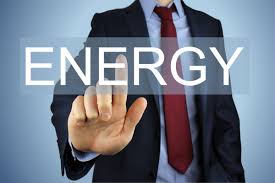How to Reduce Energy Bills for Large Businesses
We’ll explore actionable steps for reducing energy bills


Large businesses often face substantial energy costs that can erode profitability and impact operational efficiency. With energy prices on the rise, it’s critical for companies to adopt strategies that reduce consumption, optimize energy usage, and lower operational expenses. Managing energy bills is not just about reducing costs—it also supports corporate sustainability goals and enhances a company’s environmental reputation. In this article, we’ll explore actionable steps for reducing energy bills in large businesses, from conducting energy audits to implementing energy-efficient technologies.

Large businesses, whether they operate in manufacturing, retail, or office environments, consume vast amounts of energy across various sectors. The major areas of energy consumption typically include:
Understanding where energy is used and wasted is key to creating an effective energy reduction strategy.
An energy audit is an essential tool for large businesses looking to reduce energy consumption. By assessing how energy is used, audits help identify inefficiencies and recommend improvements.
Key Components of an Energy Audit:
Many energy suppliers or third-party consultants offer professional energy audits that can provide a detailed assessment of your energy use and highlight opportunities for cost savings.
Outdated equipment often consumes more energy than necessary, leading to higher bills. Upgrading to energy-efficient appliances and machinery can significantly reduce energy consumption and operational costs.
Energy-Efficient Equipment to Consider:
By investing in energy-efficient technology, businesses not only reduce their energy bills but also benefit from reduced maintenance costs and longer equipment lifespans.
HVAC systems are often responsible for a large portion of energy usage in commercial and industrial buildings. Ensuring that these systems are running efficiently can lead to significant cost savings.
Tips for Optimizing HVAC Systems:
Lighting is another major contributor to energy consumption, especially in large facilities. Switching to energy-efficient lighting solutions can help reduce energy costs.
Lighting Strategies:
Renewable energy solutions, such as solar or wind power, offer businesses a sustainable way to reduce their energy costs. While the upfront investment may be high, renewable energy systems often pay for themselves through long-term energy savings and government incentives.
Renewable Energy Options for Large Businesses:
Engaging employees in energy-saving initiatives is crucial to the success of any energy management strategy. By encouraging simple behavior changes, businesses can significantly reduce energy consumption.
How to Engage Employees:
Large businesses often have greater negotiating power when it comes to securing energy contracts. By shopping around and comparing rates from different suppliers, businesses can secure lower energy rates.
Tips for Negotiating Energy Contracts:
Reducing energy bills in large businesses requires a multi-faceted approach that involves upgrading equipment, optimizing energy use, and engaging employees in energy-saving initiatives. By investing in energy-efficient technologies, conducting regular energy audits, and exploring renewable energy sources, businesses can lower their energy costs, improve operational efficiency, and support long-term sustainability goals.
At UtilityKing, we specialize in helping large businesses optimize their energy consumption. From energy audits to renewable energy solutions, our team of experts is dedicated to helping you reduce your energy bills and achieve your sustainability goals.